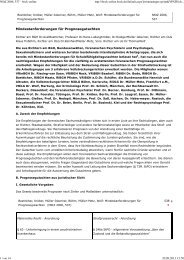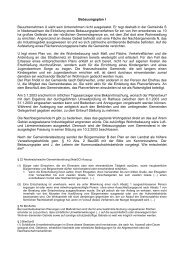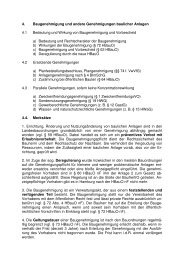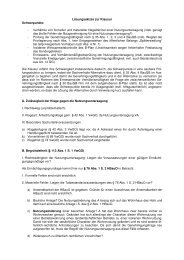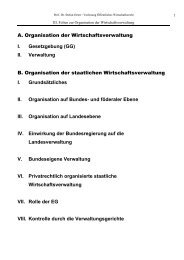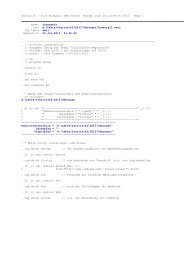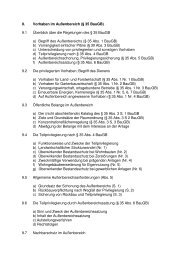Sessar Porto Problems criminology has with criminal law
Sessar Porto Problems criminology has with criminal law
Sessar Porto Problems criminology has with criminal law
Create successful ePaper yourself
Turn your PDF publications into a flip-book with our unique Google optimized e-Paper software.
7<br />
For its scientific architecture <strong>criminology</strong> needs more than political foundation. In fact, labeling<br />
theory incorporates a far-reaching epistemological core which was not overlooked but was<br />
largely dispensed <strong>with</strong> by political interests (see Bourdieu 2003, 75). The theoretical background<br />
is, among other things, symbolic interactionism which deals <strong>with</strong> the construction of<br />
reality through the assignment of meaning and sense to objects, persons, actions or decisions<br />
(Blumer 1969). The physical reality of objects is not questioned, but they are meaningless<br />
<strong>with</strong>out an attributed meaning; a city, for example, is neither safe nor unsafe by itself, it must<br />
be experienced and designated by the inhabitants to become safe or unsafe. This is also true<br />
<strong>with</strong> crime and <strong>criminal</strong>s. The unequal treatment of offenders of different classes was not only<br />
the discovery of inequity; it was also, maybe in the first place, the cornerstone of a new kind<br />
of epistemology: The property “offender” must be ascribed in a constituting way in order to<br />
come into existence (<strong>Sessar</strong> 2004, 63-66). Processes of this kind have been outlined as follows:<br />
“Deviance is not a property inherent in certain forms of behavior; it is a property conferred<br />
upon these forms by the audiences which directly or indirectly witness it” (Erikson<br />
1962, 308). In other words, “crime is a socially constructed and discursively constituted category”<br />
(Henry, Milovanovic 1996, 115), <strong>with</strong> the <strong>criminal</strong> justice system being the main constructor<br />
and as such being passed to <strong>criminology</strong> for further investigations from an external<br />
standpoint.<br />
The next step is to give the labeling approach an additional drive by introducing a theory of<br />
observation. Observation in this context is more than just a scientific method; it is the systems’<br />
operation to make a distinction between two sides of what is observed. Observation is<br />
structured by the aforementioned binary codes such as true/untrue in science or legal/illegal in<br />
<strong>law</strong>. Through its observing theories and investigations science distinguishes between, and<br />
thereby produces, “correct” as opposed to “false” (or vice versa); through its observing decisions<br />
<strong>law</strong> distinguishes between, and thereby produces, “right” as “opposed” to wrong (or<br />
vice versa). All distinctions based on observations are “self-made”. They are systems-specific<br />
constructions, that is, they do not refer to any external principles or universalistic theories. As<br />
such they are necessarily contingent; they are implying alternatives, variations, styles, selections.<br />
They do not detect realities - they form them - <strong>with</strong> the consequence that different versions<br />
of reality are established (Luhmann 1992, 332; 1998, 46-50).<br />
The acceptance of a theory of observation leads to some kind of epistemological bifurcation<br />
in <strong>criminology</strong>. Traditional <strong>criminology</strong> observes <strong>criminal</strong> behaviour through the investigation<br />
of structures, psyche and circumstances (Pease 2002, 948-949) by using different – and<br />
differentiating – kinds of disciplines, theories and methodologies. Modern <strong>criminology</strong> observes<br />
the behaviour of <strong>law</strong> <strong>with</strong> regard to crime and <strong>criminal</strong> behaviour through the study of<br />
the criteria employed to construct crime and to prosecute and punish persons defined as <strong>criminal</strong>s.<br />
Sociologically seen: Criminology can observe the restrictions forced on <strong>law</strong> by its own<br />
mode of operation; “it can observe the horizons of the observed system so that what they exclude<br />
becomes evident” (Luhmann 1989, 23).<br />
If crime is the outcome of self-referential processes <strong>with</strong>in the <strong>criminal</strong> <strong>law</strong> system, then similar<br />
systems-specific processes <strong>with</strong>in economy, medicine, politics or in the media must be<br />
expected should they be confronted <strong>with</strong> what is elsewhere called “crime”. One might even<br />
detect that certain crimes will be assigned functional tasks in accordance <strong>with</strong> the functional<br />
necessities of the respective systems, e. g., by way of debilitating blockages or impasses.<br />
More precisely: They may legally be crimes but are structural elements in the respective systems<br />
and must thus be protected against possible legal irritations. Areas of such functional<br />
operations are profit maximization in the economy (or in sport as an economic subcategory),<br />
defining enemies in order to combat them in politics, experiments on humans in medicine or<br />
methods of questioning in the police. Corruption is a bad thing but might keep a company<br />
alive and thereby help to secure jobs. Torture, even homicide, are in some countries (also




